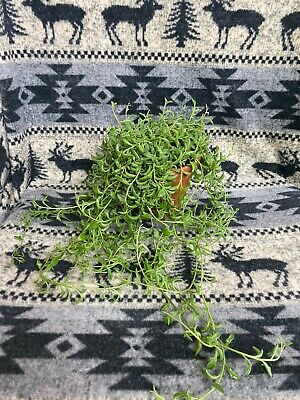
Hello Toronto Master Gardener,
What do you think of this plant? How old is it and how fast does it grow? Is it strictly an indoor plant for Toronto? When is the best time to propagate/prune it? How to make it bloom? How to grow and care for it properly in Toronto? What kinds of pest is it susceptible and what are the treatments? Is it the same as other succulents in general?
Thanks for your guidance and advice.
Thank you for contacting Toronto Master Gardeners.
Senecio Peregrinus is an easy to care for succulent plant that is best grown as a hanging basket. Note that it can be toxic to humans and animals.
It is the product of the cross-pollination of two species, Senecio Roweleyanus (string of pearls) and Senecio articulatus (hot dog or candle plant).
The plant in the photo is well-established, but I am unable to guess its age.
In a single year, the stems can reach 20 inches.
Senecio Peregrinus has care needs similar to other succulents.
It is not cold hardy cold, and should be considered a houseplant in Toronto although it could be taken outside in summer.
The plant likes bright, indirect light and soil designed for cactus i.e. lots of organic matter and well-draining.
Avoid overwatering, particularly in winter, and maintain temperatures above 10°C in winter. Fertilize as per succulent recommendations during its active growing season.
This plant can be propagated by stem cuttings. Use a sterile, sharp knife or pair of scissors to remove a stem with several sets of leaves from the main plant. Allow it to callous for several days. Place the cutting on well-draining soil. Water whenever the soil has dried out completely. After two to three weeks, the cuttings should take root. Transplant once plants are firmly rooted and new growth appears.
Prune succulents in early spring just before new growth begins.
Strings of Dolphins is grown for foliage, but it may produce small, star-like, white and pink flowers during flowering season (typically in warmer months).
Possible pests include spider mites and mealy bugs. Fungal growth may be evident if conditions are too damp.

